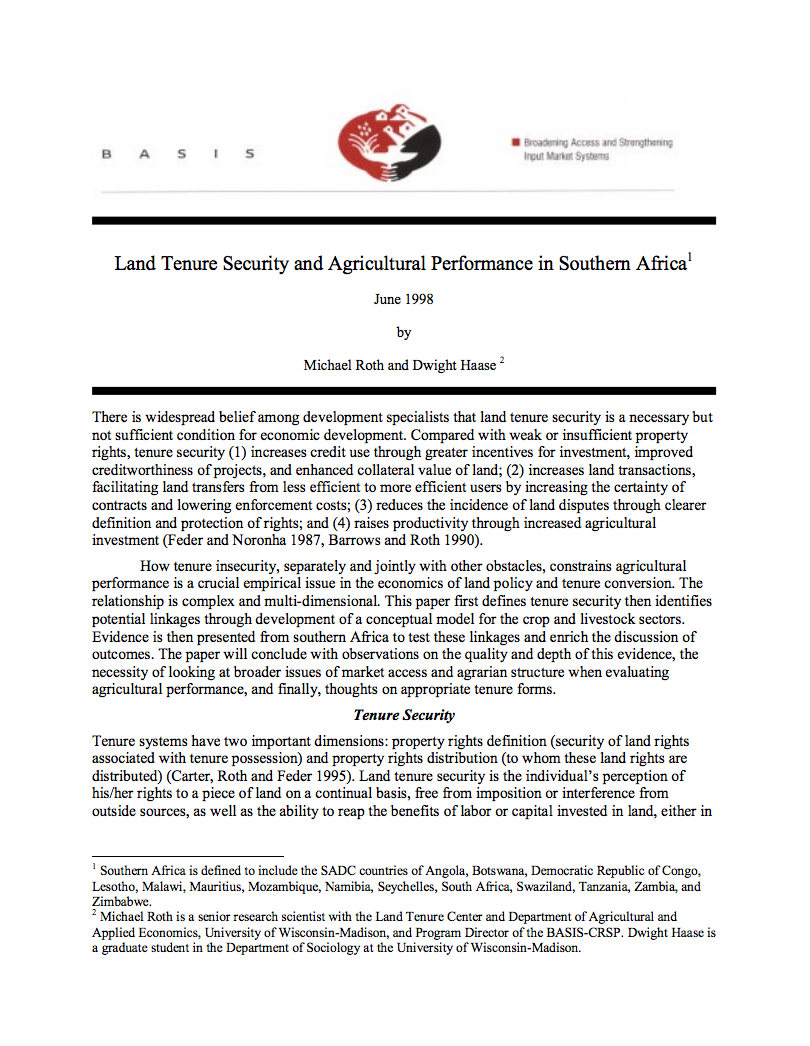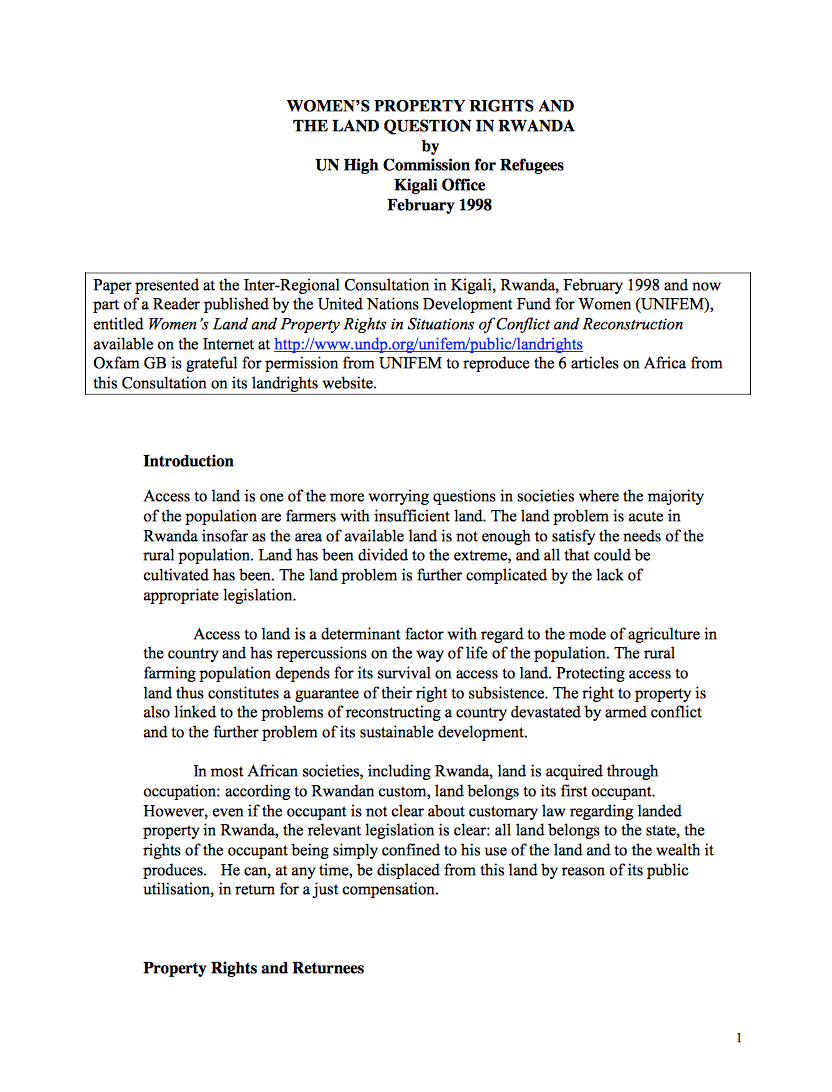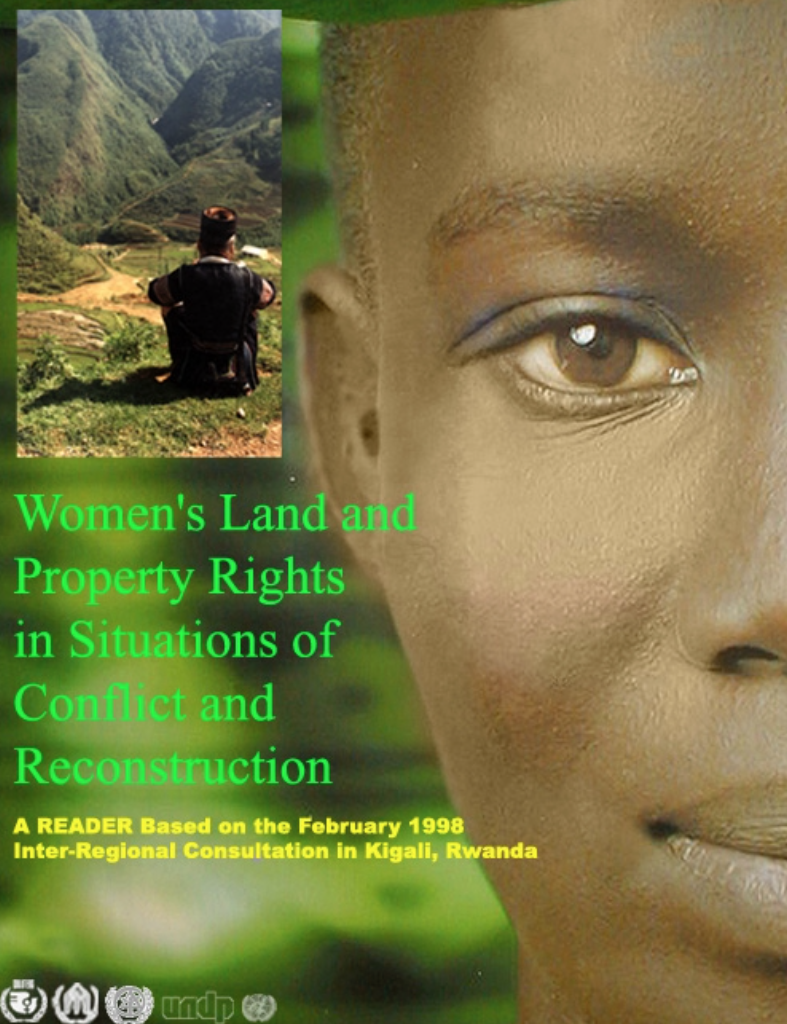PROCEDURES CONFERRING THE RIGHT TO CULTIVATE LAND/RIGHT TO UTILIZE LAND FOR AGRICULTURAL AND LIVESTOCK BREEDING PURPOSES (AMENDMENT) (1998)
THE GOVERNMENT OF THE UNION OF MYANMAR -
THE CENTRAL COMMITTEEE FOR THE MANAGEMENT OF CULTURABLE LAND,
FALLOW LAND AND WASTE LAND -
NOTIFICATION NO 1/98 -
Yangon, Thw Waxing Day of Thadingyut, 1360 ME -
(28th September 1998)
Land Tenure Security and Agricultural Performance in Southern Africa
There is widespread belief among development specialists that land tenure security is a necessary but not sufficient condition for economic development.
Women’s Property Rights in three East African Countries
Examines women’s land and property rights in Kenya, Sudan and Ethiopia. Considers the legal and other impediments hindering these rights in situations of conflict and reconstruction. Outlines the practical problems faced by women in connection with the legal and traditional structures regarding land and property rights, and makes some suggestions about how the situation can be rectified.
Women’s Property Rights and The Land Question in Rwanda
Looks at property rights and returnees, the situation of women in relation to property rights, consequences of women’s lack of access to land, initiatives taken by national authorities to improve women’s property rights, and initiatives taken by UNHCR.
Women’s Land and Property Rights in Situations of Conflict and Reconstruction
Women constitute the majority of small farmers, particularly in sub-Saharan Africa. Yet, in countries around the world, they continue to be denied the right to own the ground that they cultivate and on which they raise their families. This publication, “Women’s Land and Property Rights in Situations of Conflict and Reconstruction,” presents a diversity of views and experiences that describe the multiple strategies being used in countries worldwide to secure women's rights to land and property.
Land tenure and management of trees
Customary land areas in Western Ghana have been evolving towards individualized ownership. Inherited and temporarily allocated family lands are being transferred to wives and children as inter-vivos gifts, to be planted with cocoa. Giving gifts is a way to circumvent the traditional Akan matrilineal land inheritance system in which land is transferred from a deceased man to his matrilineal relatives but not to his wife and children.
Property rights, collective action and technologies for natural resource management: a conceptual framework
Explores how the institutions of property rights and collective action play a particularly important role in the application of technologies for agricultural and natural resource management.Technologies with long time frames tend to require tenure security to provide sufficient incentives for adoption, while those that operate on a large spatial scale will require collective action to coordinate.
Private and communal property rights in rangeland and forests in Uganda
The present land tenure situation in Uganda is essentially the result of four factors: customary tenure practices, the mailo tenure system introduced under the British colonial administration, the Land Reform Decree passed by Idi Amin’s government in 1975, and the disrupting social order under the Amin regime and during the period following its downfall. The impacts of the Land Reform Decree and civil disobedience have led to the degradation of common property resources, particularly forest areas and pastures.
After land reform, the market?
The ultimately disappointing results of past redistributive reforms caused contemporary policy-makers in Latin America to search for alternatives. In recent years, the issue of transforming tenure structure through the market mechanism has moved into the spotlight. This paper argues that it is extremely helpful to approach the topic from an institutional perspective. The institution of property rights is central to the discussion. New questions emerge: How are transactions actually being carried out in the rural setting?
New Institutional Economics: A Survey of Property Rights and Natural Resource Management [case study from Rajasthan]
In this paper, the results of a recent case study of forest conservation and management in Sariska Tiger Reserve, Rajasthan, India are reported. Changes in land use, grazing, household fuelwood collection and inadequate management institutions are identified as key factors causing forest degradation. The paper demonstrates that quantitative analysis, employing data from fairly large samples of households and villages, is a useful supplement to the qualitative methods dominating in studies of conservation and natural resource management institutions.









